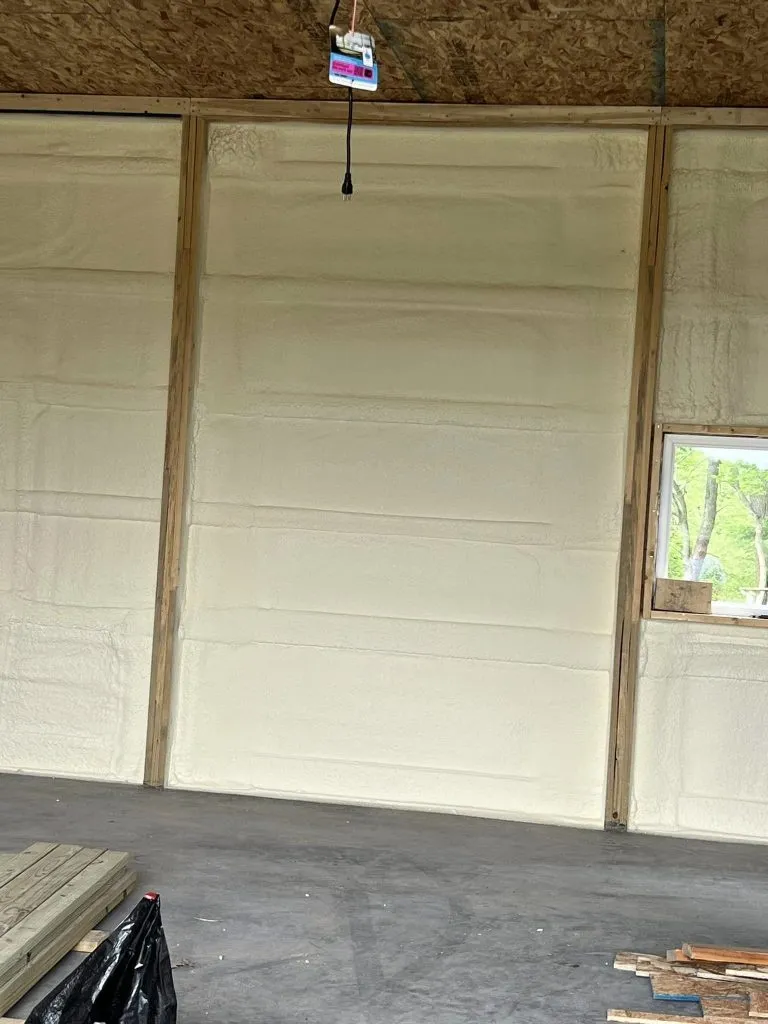The Ultimate Guide to Choosing the Right Wall Insulation

Choosing the right wall insulation is one of the smartest decisions a homeowner can make to improve energy efficiency, comfort, and indoor air quality. Whether you're building a new home or upgrading an older one, proper insulation makes a significant difference in how your home handles heating and cooling throughout the year.
For residents of Cayuga, IN, where winters can be cold and summers are warm and humid, insulating your walls correctly helps reduce energy bills and maintain consistent indoor temperatures. With several types of wall insulation available, it’s essential to understand your options before making a decision.
This guide breaks down the most effective types of insulation for different wall structures and home needs, so you can make the best choice for lasting performance and comfort.
Understanding Different Types of Wall Insulation
There’s no one-size-fits-all solution when it comes to insulating your walls. The best option depends on whether you're insulating from the inside or outside, the type of wall construction, and your budget. For homeowners in Cayuga, IN, choosing the right insulation also means considering local weather patterns, energy costs, and the age of the home. What works for a modern build may not suit an older property, so understanding your home’s specific needs is key to making a smart, cost-effective decision.
Internal Wall Insulation
Internal wall insulation is applied to the inside surface of your home’s walls. It’s commonly used for solid walls where adding insulation from the outside isn’t practical. Internal solutions may involve insulated plasterboard or building a stud wall and filling it with insulating material. While this method can slightly reduce room size, it’s a cost-effective option for homes where appearance or space on the exterior isn’t a concern.
External Wall Insulation
External wall insulation involves fixing insulation material to the outside of a home and then covering it with render or cladding. This not only boosts thermal efficiency but also improves the building’s exterior appearance and weather resistance. It’s ideal for older homes in Cayuga, IN, where exterior walls may not be insulated at all. Keep in mind that while more expensive upfront, it can provide better energy savings in the long run.
Cavity Wall Insulation
Homes built after the 1920s often have a gap (or cavity) between two layers of brickwork. Cavity wall insulation fills that space with materials like foam or mineral wool, preventing heat loss through the walls. This method is non-intrusive and usually completed in a day, making it a popular choice for many modern homeowners.
Solid Wall Insulation
For homes with no cavity between wall layers, solid wall insulation is necessary. This can be done internally or externally, depending on the home’s structure. While it’s a more involved process than cavity insulation, the thermal benefits are substantial, especially in older homes that otherwise lose heat rapidly through uninsulated walls.
Modern Options: Blown-In and Spray Foam Wall Insulation
Two advanced options that are gaining popularity are blown-in insulation and spray foam wall insulation. Both methods are ideal for reaching tight spaces or upgrading existing walls without major demolition.
Blown-In Insulation
This method uses loose materials such as cellulose or fiberglass, blown into wall cavities using special equipment. It’s fast, efficient, and especially effective for retrofitting older homes. The materials settle densely to reduce airflow and heat transfer while offering good soundproofing benefits.
Spray Foam Wall Insulation
Spray foam wall insulation expands upon application, filling even the smallest gaps and creating an airtight barrier. It offers superior thermal resistance, excellent moisture control, and additional structural strength. Though it comes at a higher upfront cost, it’s one of the most energy-efficient insulation methods available today.
For homeowners in climates like Cayuga, IN, where both heating and cooling demands can be high, spray foam provides year-round benefits by sealing out drafts and moisture more effectively than many traditional materials.
Final Thoughts
Insulating your walls is about more than just reducing energy costs—it's about creating a healthier, more comfortable home that holds up against the elements. The type of wall insulation you choose should be based on your wall structure, climate, and long-term goals.
If you're in Cayuga, IN, selecting the right insulation can also protect your home from local weather conditions while adding to its resale value. Whether you opt for internal solutions, exterior upgrades, or cutting-edge spray foam, quality installation is key. Working with an experienced team like Payless Insulation ensures that your project is done efficiently and correctly.
Frequently Asked Questions
1. What is the most effective type of wall insulation?
Spray foam insulation offers the highest R-value and air-sealing benefits, but the best choice depends on your home’s structure and budget.
2. Can wall insulation reduce noise inside the home?
Yes. Blown-in and dense insulation materials significantly reduce sound transmission between rooms and from outside.
3. Is it worth insulating older brick walls?
Absolutely. Whether through internal or external methods, insulating older walls dramatically improves comfort and energy efficiency.
4. How long does wall insulation last?
Most insulation types last 20–30 years or more, with spray foam often lasting the life of the home if properly installed.
5. Will insulation add value to my home?
Yes. A well-insulated home is more energy-efficient, which increases buyer interest and long-term resale value.
- Art
- Causes
- Best Offers
- Crafts
- Dance
- Drinks
- Film
- Fitness
- Food
- Spellen
- Festival
- Gardening
- Health
- Home
- Literature
- Music
- Networking
- Other
- Party
- Religion
- Shopping
- Sports
- Theater
- Wellness



